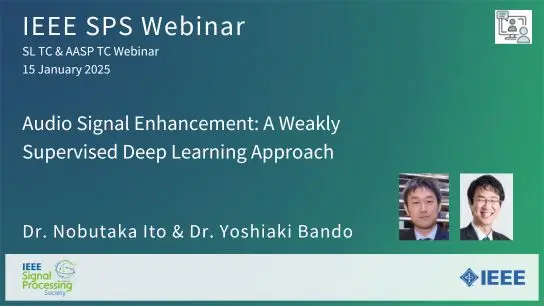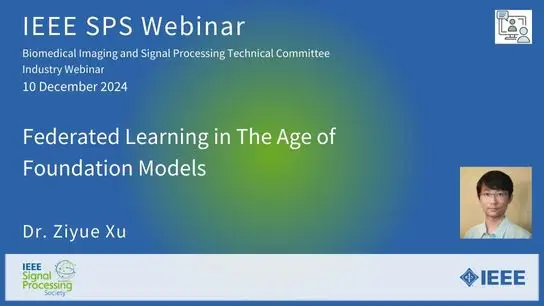Enhancing Speech Quality: Modern Techniques in Dereverberation
Tomohiro Nakatani
-
Members: FreeSPS
IEEE Members: $11.00
Non-members: $15.00Length: 01:30:07
14 Nov 2024
A speech signal captured in an enclosed space, such as a conference room, will inevitably contain reverberant components due to reflections from the walls, floor, and ceiling. These components degrade the perceived quality of the speech signal and cause issues in applications like hands-free teleconferencing and automatic speech recognition (ASR). The goal of “dereverberation” is to reduce these components while preserving the direct signal, thereby minimizing detrimental effects.
Until the early 2000s, dereverberation was considered a very difficult problem, often likened to the Holy Grail due to its fundamental importance. However, recent advancements in signal processing and machine learning have made it a solvable problem. This webinar will provide an overview of how this problem has been addressed to date and what challenges remain.
The presenter will start by addressing the fundamental challenges of dereverberation, followed by a focus on two effective approaches. The first approach utilizes a microphone array signal processing technique based on multi-channel linear prediction, known as the Weighted Prediction Error (WPE) method. WPE can estimate the inverse filter to cancel the effects of room impulse responses without prior knowledge of the recording conditions, making it a versatile preprocessing tool for various speech applications. The second approach involves Neural Networks (NNs). This webinar will demonstrate how effectively an emerging NN technique, diffusion model-based speech enhancement, can solve the problem of joint denoising and dereverberation, especially when combined with WPE. Attendees will learn effectiveness of these techniques to solve real-world problems and understand the upcoming challenges in this field.


